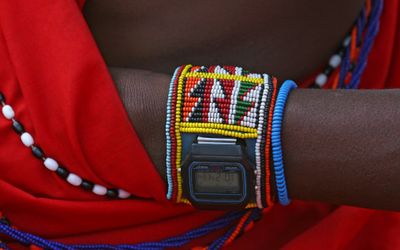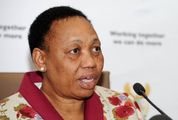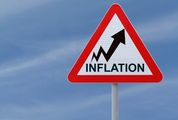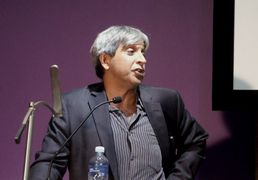Africa’s middle class can power growth
by Razia Khan,
2015-11-13 05:49:36.0
OPINION is divided on Africa’s middle-class opportunity. Earlier this year, when Nestlé announced its disappointment with the scale and growth of Africa’s middle class and cut its regional workforce 15%, the news dominated headlines. A few months later, AB InBev’s takeover of SABMiller — one of the largest corporate takeovers yet of a UK-listed entity — was motivated in large part by SABMiller’s proven growth markets in Africa.
Middle-class households are typically defined as those that spend at least half of their income on goods and services, beyond just food and basic necessities. The emergence of this "consumer class" helps to propel growth to the next level. Buoyed by supportive demographics, a rising middle class will mean that demand grows, businesses prosper, employment increases and economies flourish. It’s a virtuous cycle.
The middle class has also played an important political role. In sub-Saharan Africa the rise of multiparty politics in the 1990s, with calls for greater accountability, was often closely correlated with improved economic management and faster growth. Newly democratic SA saw an impressive emergence of a middle class, even against a sometimes disappointing overall growth backdrop. According to the Unilever Institute, a decade after apartheid ended, SA’s middle class had grown about 250% from 2004 to 2012. By the eve of the global financial crisis, the new "black" middle class exceeded the more traditional "white" middle class in spending power.
Elsewhere in Africa, accurate measurement is not as easy. Just how developed is Africa’s middle class? Different studies offer very different interpretations. An African Development Bank study in 2011 attempted to generate a definition of middle class more suited to African conditions. Controversially, it defined middle class as those living on $2-$20 (adjusted for purchasing power parity) a day. This included the so-called "floating middle" — households living on $2-$4/day — who might be knocked back into poverty in a severe economic shock. The study, using this definition, suggested that roughly a third of Africa’s population was middle class.
However, another study, published by Pew Research Centre this year using the narrower and more internationally accepted definition of middle class (incomes of $10/day or more) suggested only 6% of Africa’s population could be classified as middle income. Pew implied that while African economies had made strides in lifting households out of poverty, many had not yet made the middle-income level. According to Pew, the proportion of poor in Nigeria fell 18% from 2001 to 2011. But while the share of low-income earners grew 17%, the share of middle-income earners rose only 1% over this time.
Should we be concerned?
Africa’s experience is not too different from other regions; three or four decades ago, most Asians lifted out of poverty remained on low incomes, for a while at least. Development does not stop there. A steady income is now increasingly recognised as the one factor that distinguishes those living in poverty from those able to emerge as middle-income earners.
The decline in poverty is encouraging to build further on progress so far. Our priority is to reduce volatility of growth, particularly volatility of employment. There is an important role for countercyclical policy.
What does Africa need to lessen the volatility of outcomes? More investment, consistency of capital inflows — especially countercyclical flows — more democracy, and greater progress in improving governance. There are no short-cuts to future prosperity. Recent regional trends that have narrowed the space for civil society risk undoing a lot of the progress already made.
Important foundations for the emergence of Africa’s middle class are in place with its success in poverty alleviation. It’s in the ultimate interest of the global economy that this progress is built upon.
• Khan is chief economist for Africa, Standard Chartered Bank.

Picture: THINKSTOCK
OPINION is divided on Africa’s middle-class opportunity. Earlier this year, when Nestlé announced its disappointment with the scale and growth of Africa’s middle class and cut its regional workforce 15%, the news dominated headlines. A few months later, AB InBev’s takeover of SABMiller — one of the largest corporate takeovers yet of a UK-listed entity — was motivated in large part by SABMiller’s proven growth markets in Africa.
Middle-class households are typically defined as those that spend at least half of their income on goods and services, beyond just food and basic necessities. The emergence of this "consumer class" helps to propel growth to the next level. Buoyed by supportive demographics, a rising middle class will mean that demand grows, businesses prosper, employment increases and economies flourish. It’s a virtuous cycle.
The middle class has also played an important political role. In sub-Saharan Africa the rise of multiparty politics in the 1990s, with calls for greater accountability, was often closely correlated with improved economic management and faster growth. Newly democratic SA saw an impressive emergence of a middle class, even against a sometimes disappointing overall growth backdrop. According to the Unilever Institute, a decade after apartheid ended, SA’s middle class had grown about 250% from 2004 to 2012. By the eve of the global financial crisis, the new "black" middle class exceeded the more traditional "white" middle class in spending power.
Elsewhere in Africa, accurate measurement is not as easy. Just how developed is Africa’s middle class? Different studies offer very different interpretations. An African Development Bank study in 2011 attempted to generate a definition of middle class more suited to African conditions. Controversially, it defined middle class as those living on $2-$20 (adjusted for purchasing power parity) a day. This included the so-called "floating middle" — households living on $2-$4/day — who might be knocked back into poverty in a severe economic shock. The study, using this definition, suggested that roughly a third of Africa’s population was middle class.
However, another study, published by Pew Research Centre this year using the narrower and more internationally accepted definition of middle class (incomes of $10/day or more) suggested only 6% of Africa’s population could be classified as middle income. Pew implied that while African economies had made strides in lifting households out of poverty, many had not yet made the middle-income level. According to Pew, the proportion of poor in Nigeria fell 18% from 2001 to 2011. But while the share of low-income earners grew 17%, the share of middle-income earners rose only 1% over this time.
Should we be concerned?
Africa’s experience is not too different from other regions; three or four decades ago, most Asians lifted out of poverty remained on low incomes, for a while at least. Development does not stop there. A steady income is now increasingly recognised as the one factor that distinguishes those living in poverty from those able to emerge as middle-income earners.
The decline in poverty is encouraging to build further on progress so far. Our priority is to reduce volatility of growth, particularly volatility of employment. There is an important role for countercyclical policy.
What does Africa need to lessen the volatility of outcomes? More investment, consistency of capital inflows — especially countercyclical flows — more democracy, and greater progress in improving governance. There are no short-cuts to future prosperity. Recent regional trends that have narrowed the space for civil society risk undoing a lot of the progress already made.
Important foundations for the emergence of Africa’s middle class are in place with its success in poverty alleviation. It’s in the ultimate interest of the global economy that this progress is built upon.
• Khan is chief economist for Africa, Standard Chartered Bank.
























Change: -0.47%
Change: -0.57%
Change: -1.76%
Change: -0.34%
Change: 0.02%
Data supplied by Profile Data
Change: -1.40%
Change: -0.42%
Change: -0.47%
Change: 0.00%
Change: -0.47%
Data supplied by Profile Data
Change: 1.29%
Change: 1.53%
Change: 1.22%
Change: 1.10%
Change: 1.05%
Data supplied by Profile Data
Change: 0.04%
Change: -0.52%
Change: 0.20%
Change: -1.38%
Change: -2.05%
Data supplied by Profile Data